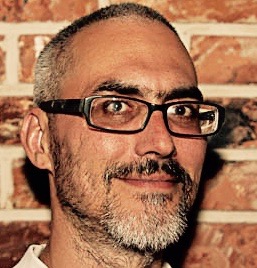SpringBoard, an official blogger for the 2016 National Genealogical Society (NGS) Family History Conference, is pleased to offer a review of this BCG Skillbuilding lecture, presented 7 May 2016.
S411, Michael Hait, “Citing Your Writing: Models for Documenting Your Genealogy”
Reviewed by Darrell Jackson, CG
Although he stated that there is more than one way to do citations and that citations do not have to be perfect, the main point of Michael Hait’s lecture was that if we think of the way we learned in school to cite books, we will have a simple (or at least simpler) model for citing sources in genealogical writing.

Michael Hait, CG
Courtesy of Scott Stewart Photography
After briefly noting the way to cite sources in a bibliography, Hait explained what he called “the logic of citation” as it applies to footnotes and endnotes.
The book citation model consists of four elements:
1. Author or creator of the book
2. Title of the book
3. Publisher, place, and date of publication
4. Location of the information, usually a page number
Application of this model to a typical genealogical citation, that is, of a document or record of some kind, requires two major modifications. First, most documents are unpublished, so item three may not be relevant. Second, because the document is not published and therefore not readily available in libraries in many locations, it is necessary to include access information in the citation. Access information usually cites an archive or public office (for example, a recorder of deeds).
Another guide for the construction of a citation is to think of a citation as a sentence and to follow the rules for capitalization and punctuation that apply to sentences. This is particularly true of the use of the semi-colon. It is used, as in a sentence, to separate parts of the citation.
Using the citation and model and sentence construction guidelines, Hait went through several examples of how to construct citations. The examples included citations of vital certificates, patent record books, census records, and items in a manuscript file such as a deposition in a court case.
The most complicated citations are those pertaining to a digital image accessed in an online database. These should include the URL and what the online database itself is citing. As illustrated by Hait, such citations involve repetition of some information.
The lecture gave a good understanding of the logic of citation. It was perhaps an overstatement to say that application of this logic is simple.
A recording of this lecture may be previewed and ordered from PlaybackNow.
The words Certified Genealogist are a registered certification mark, and the designations CG, CGL, and Certified Genealogical Lecturer are service marks of the Board for Certification of Genealogists®, used under license by board certificants after periodic evaluation.